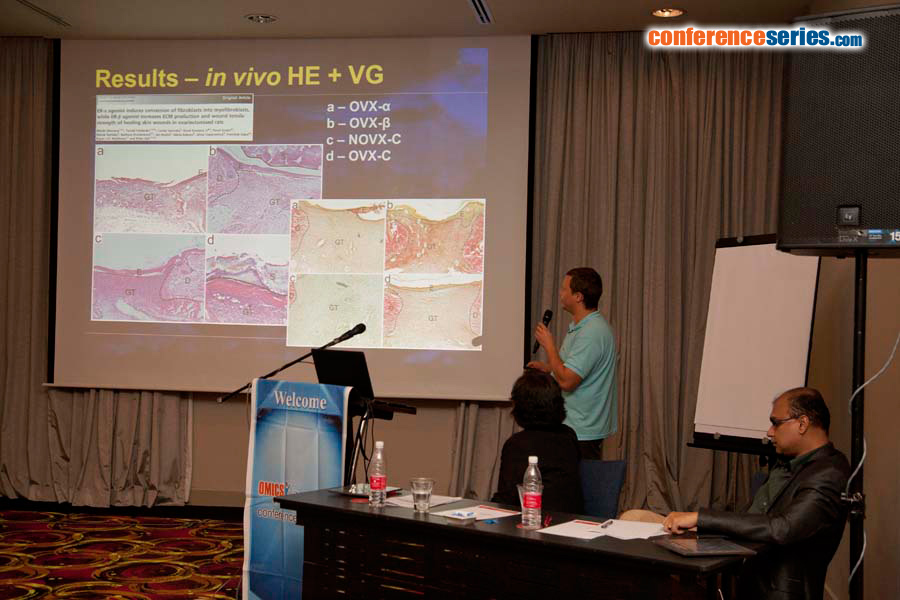
Peter Gal
Pavol Jozef Šafárik University, Slovak Republic
Title: Pharmacological targeting of estrogen receptors-α and -β differently modulates the phenotype of keratinocytes with impact on skin wound healing
Biography
Biography: Peter Gal
Abstract
It is well known that wound repair efficiency in elderly is reduced, and the skin becomes more fragile and susceptible to trauma. Estrogen deprivation in post-menopausal women can be responsible for many age-related processes including poor wound healing. Guided by previous observations that estradiol accelerates re-epithelialization via the estrogen receptor (ER)-β, the question whether selective ER agonists (PPT – ER-α agonist; DPN – ER-β agonist) affect the expression of basic proliferation and differentiation markers (Ki-67, keratins-10, -14, and -19, galectin-1, Sox-2) of keratinocytes was answered using the model of HaCaT cells. In parallel, ovariectomised rats were treated daily with ER modulator, and wound tissue was removed 21 days after wounding and routinely processed for basic histology. Our study revealed that HaCaT keratinocytes express both ER-α and -β, thus being suited for study of ER agonists on epidermis regeneration. Stimulation of ER-α led to a protein expression pattern as seen in control culture with moderate expression of Ki-67. On the other hand, activation of ER-β led to an increase in cell proliferation and keratin-19 expression as well as to a decrease of galectin-1 expression. Fittingly, rat wounds treated with the ER-β agonist showed the most prominent progress of epidermis regeneration. Thus, we herein add information on how estrogens affect expression patterns of selected markers en route to modulate keratinocyte proliferation and differentiation with direct impact on wound healing.
Speaker Presentations
Speaker PPTs Click Here


